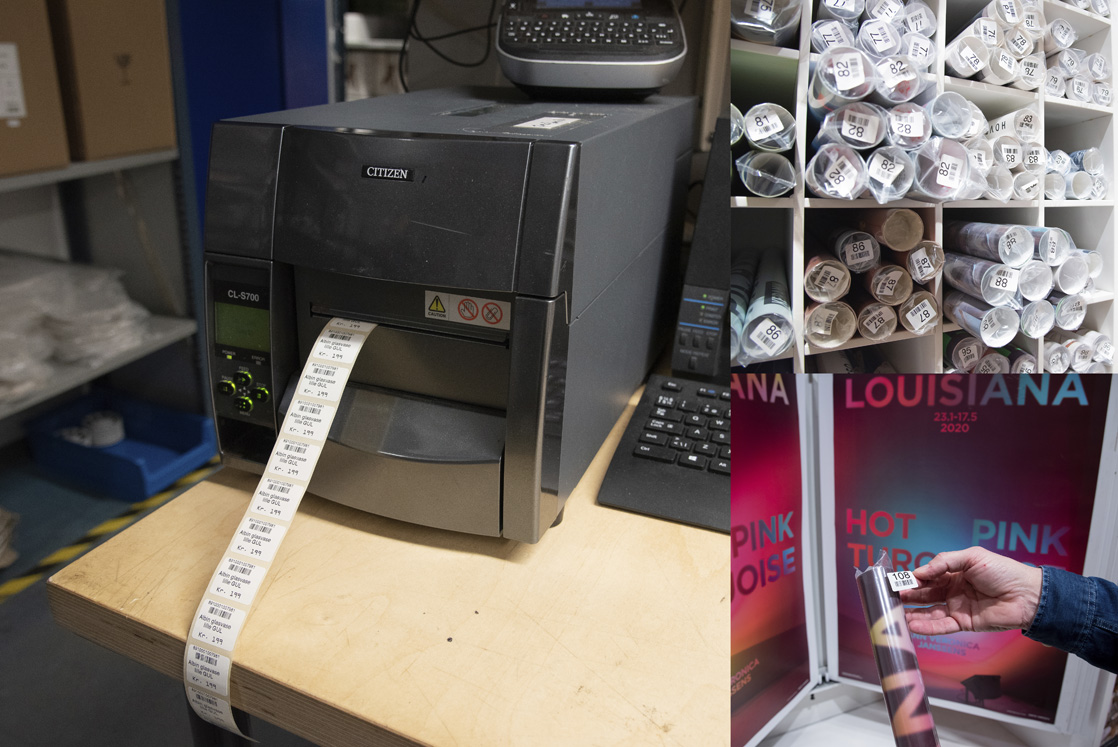Returns are a costly factor in retail. According to a recent study by the Chair of Business Administration, in particular Production and Logistics at the University of Bamberg, Germany is the European champion when it comes to returns – and has the highest return rates. Almost one in four parcels (24.2%) in e-commerce are returned to retailers. This is closely followed by the other German-speaking countries Switzerland and Austria. The figures are similarly high in non-European countries, at 27 per cent in the USA and 26 per cent in the UK.
Returns are a common and indispensable practice in retail because they promote customer satisfaction and build trust. The downside, however, is the considerable costs associated with handling returns.
Return logistics have the effect of a silent profit snatcher: Shipping, handling and processing returns cause high costs and a great deal of effort. It is estimated that each return costs the retailer between 10 and 20 euros. This is a major challenge, especially for e-commerce companies with different channels and locations, as online returns are on the rise.
Return costs in many areas
Additional costs for the return of goods arise in several areas:
1. Logistics: The processing of returns requires complex logistics. Items have to be transported back, checked and, if necessary, repaired or replaced before they can be sold again. These additional steps mean more working time, more storage space and more transport costs - factors that can quickly add up to considerable expenses and can amount to up to 60 % of the total costs of returns logistics.
2. Loss of value: Returned items take up valuable storage space. They lose value until they are resold. Repackaging and relabelling the products also incurs costs.
3. Administration: employees have to check the returned items, assess their condition, process refunds and integrate the returned products into the warehouse stock. This additional workload not only means higher personnel costs, but also time expenditure.
4. Disposal: The environmentally friendly disposal of returned goods poses a further challenge. Retailers must ensure that unsaleable products are disposed of or recycled in a sustainable manner, which entails additional costs and requires environmental responsibility.
Effective returns management is therefore a significant cost factor where it is important to minimise the negative effects. The implementation of efficient returns handling is therefore essential for any company that sells directly to the consumer.
What can retailers do to keep costs under control?
The minimisation of costs is based on several levers. These include avoiding returns, improving returns processing and optimising logistics processes through automation and solutions such as first-class printers to create the perfect foundations.
Avoid returns
Many retail companies are working to further reduce and avoid returns. To do this, they are simplifying their processes by reducing the number of work steps and increasing transparency through improved communication with their customers, for example, according to the latest EHI study "Shipping and returns management in e-commerce 2022".
Reducing the number of returns before they occur is the first choice and ideally means ensuring from the outset that returns do not occur in the first place. An important measure to avoid returns is a detailed and accurate product description in the online shop.
Improve processing of returns
Retailers are also trying to make the returns processing process more efficient. To do this, they start with the identification of the items, including allocation to the returns order, which is necessary, for example, if the respective label has been removed from returned items or if the goods require minor preparation.
Processes such as the inspection of goods and reconditioning must be precisely defined and adhered to by employees. One optimisation that has a positive effect, for example, is when processed top sellers are not put back into storage at all, but are made available directly for new customer orders.
Optimise shipping labels
A central element in the shipping process is a standardised shipping label. The shipping label contains all the relevant information required for the smooth and fast processing of returns, such as the sender, recipient, consignment number and the reason for the return. All this information is collected in a barcode.
To increase productivity, it pays to pay attention to the quality of the shipping labels and the equipment used to produce them, as perfectly printed labels form the basis for the efficiency of returns logistics.
Increasing efficiency with industrial printers
The quality of printed barcodes is of crucial importance, as poor print quality with unclean or faded print results in time wasted searching for the right information. High quality desktop or mobile label printers are therefore essential. Market-leading models, such as the CL-S521II,CL-S621II and CL-S631 from Citizen Systems, have been specially developed for outstanding performance in tough warehouse environments.
The devices with all-metal mechanisms are robust and reliable and print at output speeds of up to 150 mm per second. They are characterised by minimal maintenance and easy media loading for consistently high quality barcode printing at up to 300 dpi.
The printers offer maximum flexibility and compatibility as well as easy integration into existing applications and networks within a warehouse thanks to standard on-board ZPL and Datamax emulations and BASIC interpreter programming support. They feature powerful 32-bit processors and plenty of space to store a range of logos and fonts to create branded labels. The compact devices also offer innovative anti-crease technology and automatic tensioning systems for quick and easy ribbon loading.
Automate warehouse processes
For time-saving processing, it is essential to harmonise various processes in the warehouse, such as goods receipt and registration, goods preparation, quality control and the repackaging and storage of items. These processes can be automated using IT systems (e.g. ERP software). For example, return documents can be automatically printed out together with the return slip and return label when the goods are dispatched. In addition, returns can be tracked via IT systems in all channels and can also be resumed for sale upon return. Transparency and automation are well advanced with networked IT, but manual activities such as checking the returned goods for resale are still required in some cases.
Return option influences customer experience
If customers can easily return, replace or repair products, satisfaction increases significantly. In the age of online reviews, this is of paramount importance. In a study by UPS, 95% of customers said they would not return to a brand after experiencing a negative return process. Conversely, improved customer service due to efficient returns creates brand loyalty and has a positive impact on a company's image.
With the right returns strategy, retailers can benefit from increased revenue thanks to greater loyalty and reduced waste. By automating the entire returns process and emphasising the customer experience, effective reverse logistics management can also reduce the negative impact of returns on the bottom line


